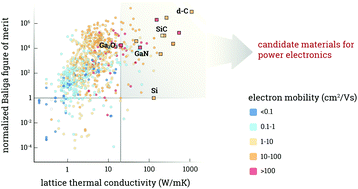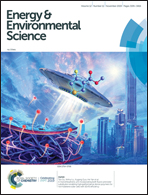A computational survey of semiconductors for power electronics†
Abstract
Power electronics (PE) are used to control and convert electrical energy in a wide range of applications from consumer products to large-scale industrial equipment. While Si-based power devices account for the vast majority of the market, wide band gap semiconductors such as SiC, GaN, and Ga2O3 are starting to gain ground. However, these emerging materials face challenges due to either non-negligible defect densities, high synthesis and processing costs, or poor thermal properties. Here, we report on a broad computational survey aimed to identify promising materials for future power electronic devices beyond SiC, GaN, and Ga2O3. We consider 863 oxides, sulfides, nitrides, carbides, silicides, and borides that exhibit finite calculated band gaps. We utilize ab initio methods in conjunction with models for intrinsic carrier mobility, and critical breakdown field to compute the widely used Baliga figure of merit. We also compute the lattice thermal conductivity and use it as an additional screening parameter. In addition to correctly identifying known PE materials, our survey has revealed a number of promising candidates exhibiting the desirable combination of high figure of merit and high lattice thermal conductivity, which we propose for further experimental investigations.



 Please wait while we load your content...
Please wait while we load your content...
